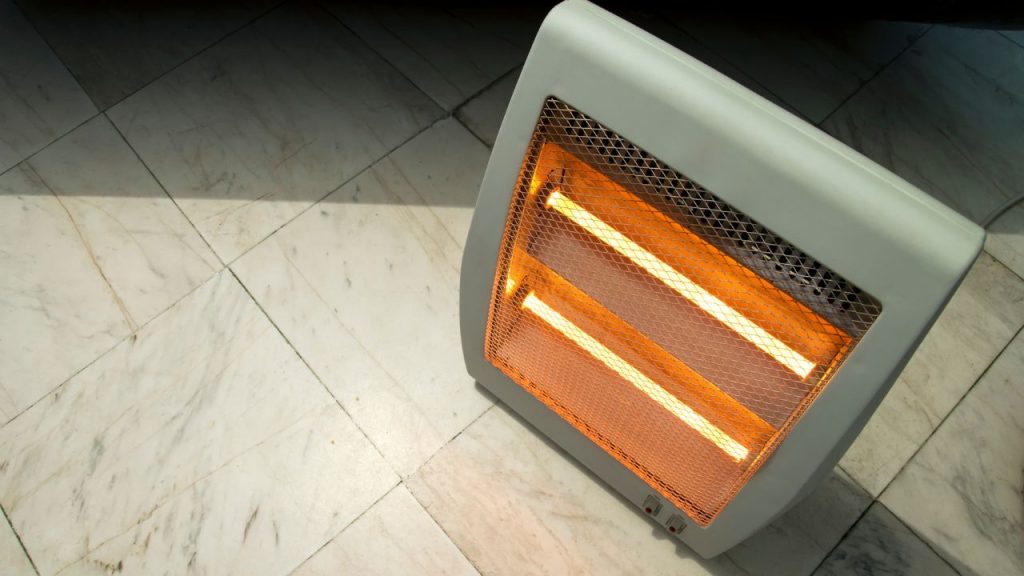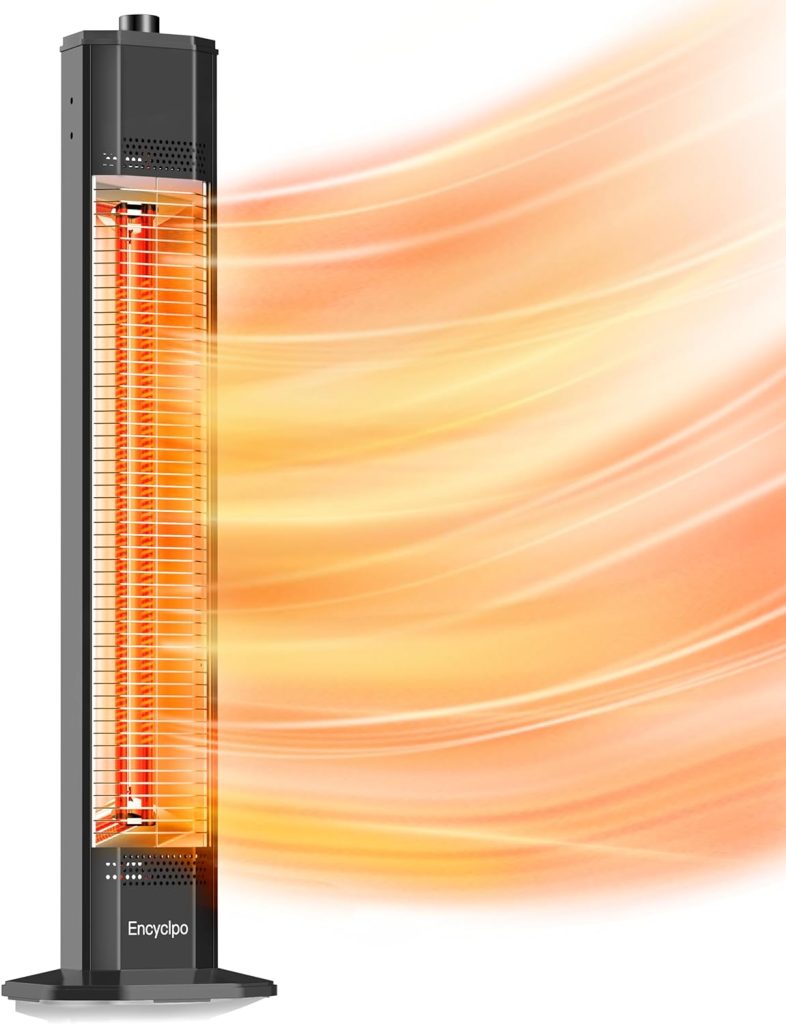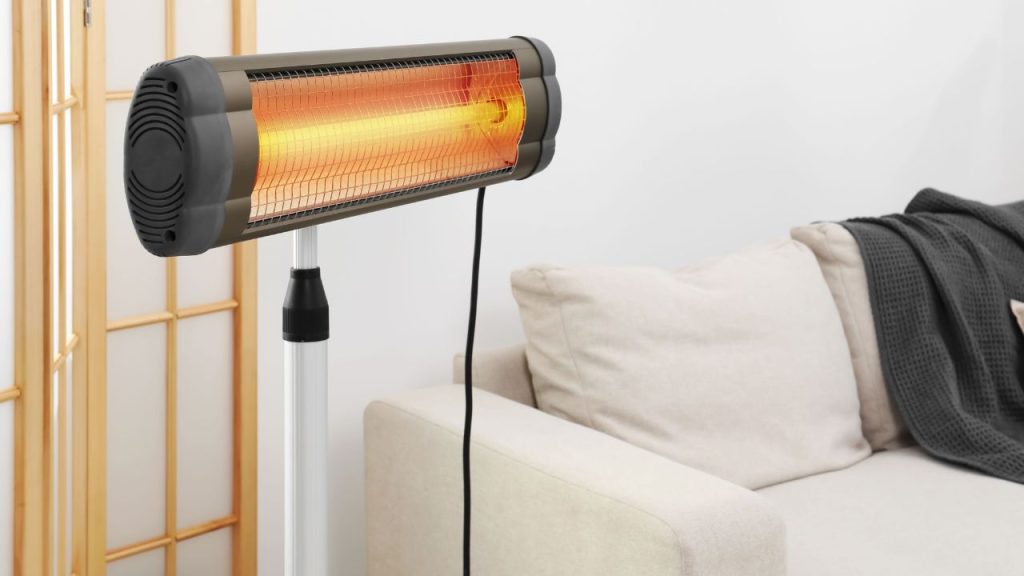Ever since the beginning of time, people have used infrared heating to heat objects. The sun is our most well-known infrared heater, which can warm up even the coldest winter days.
However, the surrounding air’s temperature does not necessarily determine whether you are warm or chilly. These heaters come in several shapes and sizes. Some people aim their infrared light directly into a room or place to heat anything it reaches.
The construction and fuel source of these heaters also differ. Some infrared heaters run on electricity, natural gas, or propane. These heaters have unique requirements and should only be used in specified conditions.
Infrared heaters are far less harmful to the environment than other heaters. If you want to know about infrared heaters, keep reading this article.
Table of Contents
What Is an Infrared Heater?

Infrared heaters are a type of heaters that emit radiant heat to warm the environment. Objects and surfaces first absorb this heat, then re-radiate back into the space they are supposed to heat.
You can also experience this kind of warmth on sunny days when sunlight rushes in through your bedroom window and hits the surfaces of your room.
This heat warms up your room slowly over time, and even when the sun has gone down, you can still feel the warmth. This is the same way infrared heaters work.
They radiate heat waves from the appliance’s surface, which are absorbed by the surface of your home and provide a constant source of warmth during the day and even at night.
Infrared does not heat the air; it passes through it until it directly touches an object or person. Infrared heaters are highly efficient because of the ‘A to B’ transfer of heat, which means less heat will be lost than ordinary convector heaters.
These heaters are available in various shapes and sizes, from electric patio heaters for outdoor heating places to slimline displays for everyday interiors. These heaters are an excellent way of keeping a room warm the whole day.
This form of heating can save electricity while providing adequate heat in your most-used areas. Open living spaces, enclosed garages, and living rooms are the best places for these heaters.
How Do Infrared Heaters Work?

Although every infrared heater radiates radiant heat, the working of every heater varies depending on whether it’s an outdoor or indoor heater.
-
Infrared Panels
Radiant panels, also known as infrared panels, operate by placing a length of resistive wire underneath the heater’s surface. Heat is conducted through the front panel’s surface and into the room when an electric current flows through the wire.
Many types of patio heaters, like wire-element and ceramic heaters, use the exact heating mechanism as radiant panels. Still, they require a much higher wattage to adjust for cooler outdoor temperatures.
Since infrared panels don’t come with moving parts and have a simple design, they have a significantly longer lifespan than other electrical heating systems. They release a type of infrared known as far-infrared. It is the lightest type of radiant heat and identical to our body heat.
-
Infrared Patio heaters
Electric outdoor heaters also create a much stronger kind of radiant heat to balance the sense of being out in the cold. On the other hand, infrared patio heaters also use an infrared lamp.
When turned on, these lamps have a carbon filament or tungsten inside a quartz bulb. It is filled with halogen gas that helps produce high heat, providing quick warmth you can enjoy even on a chilly day.
The lamp’s filaments heat up to the point where they emit a bright light, a nice little bonus feature as the night falls, offering additional light and a comfortable atmosphere while sitting outside.
These heaters use near-infrared, the hottest and most powerful form of radiant heat. Glowing patio heaters are also called quartz heaters and halogen heaters.
Infrared Heating Principle
Radiant heat travels through the air till the time it is touched by anything. Almost everything can absorb this heat; its radiant heat focuses on heating the interior space surface area instead of the air volume.
When the infrared is absorbed by a surface, such as the ceiling or walls, it is re-radiated back into the room, producing a 360° heat source. Since infrared heats deep into the material of the building, it takes far longer for the room to heat up at first.
However, once the room is heated, it stays heated for a long time. This is because infrared heaters heat the room evenly from top to bottom.
This enables infrared system users to lower their temperature by a few degrees while maintaining the same warmth and pleasure as a traditional heating system.
Since infrared heat transfer is not dependent on on-air movement, it is not affected by draughts and does not disturb pet hair, dust, or other irritants. Setting the positioning of infrared heaters is essential to use them correctly.
To give maximum warmth, these heaters need a line of sight. It means they should preferably be positioned in high-occupancy parts of the room so their heat can be directed to the place that needs more warmth.
Infrared Heater Cost Estimator
Running expenses vary according to the variety of characteristics of the heater, such as its amount of structure, location, age, and insulation, as they do with any heating system.
Although the cost varies, you can estimate probable operating expenses with only a few simple pieces of information. To make an estimate, what you need to know is:
- First, you will need your energy bill in pence per kilowatt-hour.
- Second, the wattage of the infrared heater used.
- The total number of hours you plan on using your heating per day.
Infrared Heater Advantages

- Provide instant heat
The wavelengths produce immediate warmth with infrared technology, even in the coldest conditions. So, passive or active, it swiftly dismisses the cold, resulting in a much more comfortable environment.
- Silent
When compared to traditional space heaters, infrared heaters are incredibly silent. The absence of a fan is the cause of this benefit. Instead of emitting noise, they emit light energy, making them an ideal addition to your bedroom or another place where noise pollution may be an issue.
- It does not harm the indoor environment.
Although infrared heaters have some drawbacks, they do not impact enclosed spaces as other technologies.
While using an infrared heater to heat a room, you won’t notice a difference in humidity. There is also no change in the oxygen content.
As a result, you won’t develop dry skin or inflamed sinuses like you might with conventional warmers.
- You get to experience natural sunlight.
Infrared heaters generate the same type of heat that you get from the sun daily. This means you may use many benefits of natural sunlight without worrying about UV rays daily.
As a result, you’ll have faster warming benefits, excellent blood circulation, and significantly less dust floating around the room, which is primarily present in the rooms due to the fans used by most other heaters.
- It won’t pollute the air in your room.
Infrared heaters have additional environmental benefits because they do not emit toxins into the air when used. So, using this technique, you’ll get zero carbon emissions and no hazardous consequences.
Infrared Heater Disadvantages
- Can be dangerous
When an infrared heater’s coils start to transmit heat, they eventually boil. Therefore, maintain a distance from the unit to prevent a contact injury.
- Emits light
While transmitting heat to your surroundings, infrared heaters always produce an orange color. Although the purpose of this shade is to persuade people to avoid handling the goods, it may have some negative consequences.
- The room becomes cold immediately when turned off.
When an infrared heater is turned on, it may start working immediately, but it will stop emitting heat as soon as you turn it off.
Infrared Heaters FAQ
-
Are Infrared Heaters Safe?
The infrared heaters work the same way as the sun. Therefore, these heaters are safe but dangerous when the coils become hot. That is why you must take precautions.
-
Do infrared heaters use a lot of electricity?
Compared to other electric heating types like portable radiant space heaters, these heaters are quite efficient and do not use much electricity.
-
Can Infrared Heaters Cause Cancer?
The majority of people have this view that infrared heaters can cause cancer. On the other hand, UV radiation is the real reason for cancer. Moreover, contrary to popular belief, infrared radiation is more beneficial than a liability.
-
Can you heat a house with infrared heaters?
They’re fantastic for keeping your whole house warm. These contemporary electric heaters provide deep heat and comfort in your bedroom, bathroom, living room, and yard.
-
Are infrared heaters any good?
Infrared heaters are excellent for heating houses. These heaters are not just suitable for indoor heating but also for outdoor.
-
Can I leave the infrared heater on all the time?
It is entirely acceptable to leave these heaters on overnight. However, ensure the heater is placed where it would not fall over.


